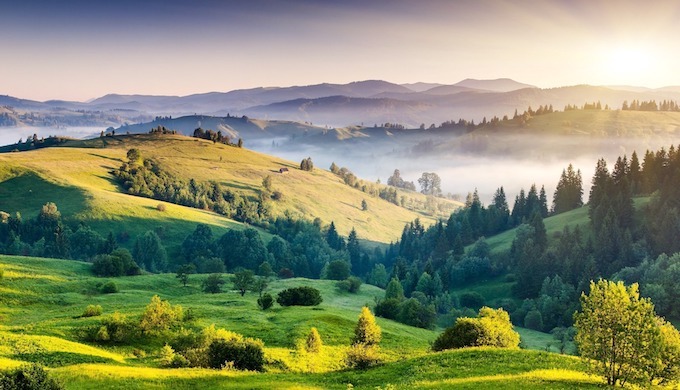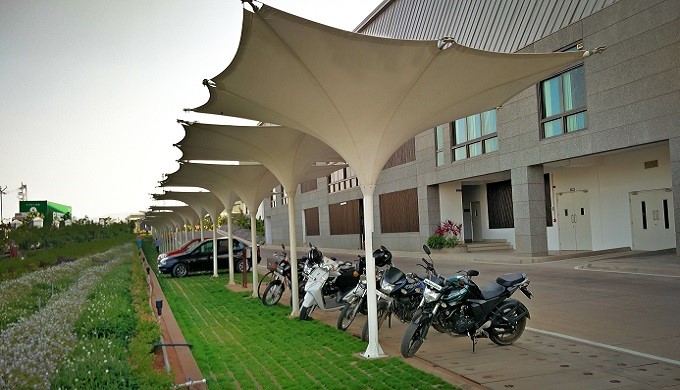[Book review] Living days and nights in the forest
- In his memoir, “Running Away from Elephants: The Adventures of a Wildlife Biologist”, Rauf Ali writes of the burden of being the famous ornithologist Salim Ali’s nephew, with irreverence and wit.
- An ornithologist-turned-primatologist, Rauf’s strength was in questioning preconceived notions in conservation. He was also a mentor to many of the leaders in conservation science in India today.
- In this review, senior environment journalist Darryl D’Monte remembers his friend Rauf, his genius, his eccentricities and the love for a ‘spirited’ discussion. This is the first book review that Mongabay-India is publishing.
I will never forget the two chaotic nights I spent with the wildlife biologist Rauf Ali in the jungles of Mundanthurai, a hilly tract in southernmost Tamil Nadu. In spite of my grave misgivings, I twice accompanied him on a romp through the forest in pitch darkness, with a couple of students from the Kodaikanal International School.
He wore rubber slippers, armed only with a torch and we careered through the undergrowth, veering off any path. He seemed impervious to any threat from fauna or, indeed, flora, because much of it was thorny undergrowth. It wasn’t any consolation that he was primarily in search of leopards.
As he observes in this book of his personal accounts as a wildlife biologist, Mundanthurai was, and probably still is, the easiest place in India to see these spotted cats. As it happened, we saw nothing both nights more alarming than a slender loris, to my immense relief.
Rauf was the quintessential non-conformist, as this book, put together after his death due to cancer in 2016, amplifies in good measure.

He wasn’t overly cowed down by the formidable reputation of his uncle, the diminutive “birdman” of India, Salim Ali. Much later, when Rauf made Mundanthurai his research laboratory, he describes the panic the forest department staff members evinced when his uncle announced that he was visiting. Although Rauf told them to treat him like any other visitor, the foresters were not convinced. He was personally worried how he would hide his smoking and excused himself each time, telling Salim he needed to go to the bathroom.
Salim, no stickler for formalities himself, told Rauf that he could smoke in front of him and while at it, drink as well. “Birdwatching with him there had its funny side, what with five guards running behind him, trying to pluck the leeches off him and infuriating him in the process,” writes Rauf. “What sticks in my mind however about his trip is not the birdwatching, but his habit of eating idlis at breakfast with fried eggs and jam. This almost created a revolt among the cooks there and provided food for conversation for months afterwards.”
Much later, when Rauf was to be admitted into the Entry Group, as it was called, to be permitted to live in Auroville, Salim told his nephew that he had just met someone in Delhi from that alternative community who informed him that Rauf had been admitted into the privileged fold. When asked his name, the eminent ornithologist complained that his visitor had bored him for three hours and he had switched off his hearing aid.
Gone too soon
Rauf died of cancer two years ago, 2016, on April Fools’ Day. He would have found this appropriate, because he was not one to suffer fools gladly. This freewheeling account of his short but eventful life as a biologist in several locations and institutions, mostly in this country, is peppered with endless anecdotes to demonstrate this.
It is fluently written, full of insights which demonstrate his perceptive mind, but also reveal his tendency to flit from research subject to subject, gathering no moss in the process. On his own admission, his encounters with other wildlife biologists and on occasion, foresters and even the odd bureaucrat, were leavened with alcohol. As a fellow resident of Bandra, a coastal Mumbai suburb and friend, I can vouch for his propensity to down vast quantities of rum.
The ornithologist turns into a primatologist
A British ornithologist, John Oates, persuaded Rauf to switch from studying birdsong – the chaffinch in particular – to the behaviour of monkeys. Rauf protested to Oates’s American colleague, who had been facing visa problems while doing his research on primates in India, that he was wary about the idea since he knew nothing about monkeys, the colleague assured him that that was an advantage since Rauf could start “with an uncluttered mind”. Forever the iconoclast, Rauf notes: “I would start doing the field research unhampered by notions that might be false.”

This is what drew him to the Mundanthurai sanctuary and the beginning of “a love affair with the place, an affair that still holds strong”. (Much later, in 1988, Mundanthurai and its adjacent Kalakkad sanctuaries were merged to form a Tiger Reserve). Such was his lack of knowledge about monkeys that when he saw his first Nilgiri langur, he was surprised that it was black. Rauf was to study bonnet macaques, a common species (“the nasty one you get in towns all over southern India”) but cites the presence of the lion-tailed macaque, an arboreal iconic species which symbolised the dam-versus-environment struggle in the early 1970s to preserve Silent Valley in Kerala.
His first few days were spent with Oates introducing him to the forest, where he saw his first lion-tails, dark macaques with a grey halo and the telltale bushy tuft at the end of their tails. “I was also given a crash course in identifying trees. I confess I didn’t learn very much, being too busy jumping around, avoiding leeches,” he writes. “Somewhere, I recall reading a well-known science writer writing about the rainforest: wittering on about the trees, the layers of vegetation, the diversity of life and the millions of years of evolution in front of his eyes. I suspect the man was a liar. The rest of us concentrate on very little besides what we have to; the leeches occupy most of our time.”
As I also learnt while conducting research for my 1985 book, Temples or Tombs? Industry versus Environment: Three Controversies (CSE), the overwhelming reason for studying monkeys is that they lead to insights regarding human behaviour. This is why in the University of Bristol, to which Rauf was associated in his early days, those studying monkeys were in the psychology department whereas in most other institutions they were in the zoology or anthropology departments.
The sub-section of this chapter is titled “Watching the monkeys watch me”, which speaks for itself. Rauf recalls: “Every month, five days would be set aside for following the group from dawn to dusk. These were boring! By the afternoon of the fourth day I would wonder what I was doing there. However, macaques at least made it interesting. There were constant quarrels, at different levels of aggression, over different issues: food, sex, proximity to babies, and trying to stop females from running away and joining another group. Then there would be coalitions: various individuals would gang up on various other individuals. I was busy noting who did what with which to whom.”

“Shaky” arguments against the Silent Valley dam project
Once a month, he would go higher up to track lion-tailed macaques. This is when Rauf’s iconoclasm got the better of him. He finds it “astounding” that “most claims made by the environmental brigade were easily falsifiable.” He sees from the guest house visitors’ book at the entrance to Silent Valley that eight out of every ten who wrote “indignant articles” objecting had never even visited it. To cite what Gunter Grass once said in Mumbai, “In my profession it’s not necessary to be a barber to write about a haircut!” Rauf covers his tracks by agreeing that the dam shouldn’t have been built, but the “scientific” case against it was “very shaky indeed.”
As I documented in my book, the leading opponent of the dam was the science-for-the-people Kerala Sasthra Sahithya Parishad (KSSP), which consisted largely of progressive academics. These were bolstered by scientists from the Bombay Natural History Society, including Salim himself and other Indian and international agencies like the World Wildlife Fund (WWF) and International Union for Conservation of Nature (IUCN).
Rauf, being ever the inquisitive sceptic, wondered why there were so few of these monkeys in a forest which was so well preserved. The answer, surely, was that Silent Valley was a tiny tract surrounded on all sides by heavily deforested and disturbed areas and so, their habitat was endangered.

Inculcating “bad habits” in his students
Space doesn’t permit me to cite his all-too-frequent peregrinations, including a stint at a Bangkok university. Two destinations seem to have occupied a place in his heart: the Andamans and Auroville.
As this review makes clear, he was a quintessential nonconformist, which led to complaints to the Registrar of Pondicherry University – which Rauf gleefully reproduces – about him being “above any control. He comes to the School at all hours, most questionably at night… Students are induced to drink liquor by him and it is a common site [sic] to see him drinking beer in bars with students”.
While Rauf was unquestionably a brilliant wildlife biologist, imbued with a prickly sense of humour, one wonders whether he was not, in the end, his own worst enemy. However, he left an indelible impression on his many students. Several of his fellow biologists have underlined how his biggest contribution to wildlife management was to turn it into an area of serious intellectual enquiry.
The book under review:
Running Away from Elephants: The Adventures of a Wildlife Biologist. By Rauf Ali. Published by Speaking Tiger. Price: Rs 499.
[Darryl D’Monte is a senior environment journalist and a former editor with the Times of India and the Indian Express].








